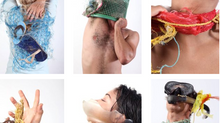Analogue Project- Studio Lighting
- Admin
- Oct 16, 2017
- 2 min read
Softbox
Softbox – produces an even and soft illumination on the subject. To get the softest light from your softbox you have to get really close to your model, the closer you get the softer the image.
Butterfly Lighting
This lighting is characterized by the butterfly-shaped shadow that it casts below the nose. The butterfly pattern can be quite useful for a variety of faces, but is at its best on lean subjects with high and pronounced cheekbones. It is produced by placing the light source above the face and in line with the direction in which the face is pointing.
Hard lighting
Hard light is found where the lighting is direct, undiffused, and is not bouncing or scattered by local objects or conditions. The flash on your camera is a hard light source.
What is the difference between soft and hard lighting?
The definition of soft light is:
"Light that tends to "wrap" around objects, casting diffuse shadows with soft edges. Soft light is when a light source is large relative to the subject."
The definition of hard light is:
"Hard light sources cast shadows whose appearance of the shadow depends on the lighting instrument. That is, the shadows produced will have 'harder' edges with less transition between illumination and shadow."
Studio Terminology
• Key Light - The main light source, casting the dominant light and shadows in an image. • Fill Light – Lights which fill in the shadows on the subject, usually not as high in intensity as the key light or further away from the subject than the key light.
• Snoot - A cone-shaped item you can place over the front of your light. It intensifies the light and gives you the ability to direct your light source in very specific places. Not used in portraiture very much, but you can produce amazing results with these in still life photography.
• Soft Box - Large, diffuse light source made by shining light through a diffuser. These offer the same soft, flattering lighting as a north-facing window in Rembrandt lighting.
• Reflector - usually white, silver or gold, used to bounce light back from the main light onto the subject.
Rembrandt Lighting
Rembrandt lighting is a lighting technique that is used in studio portrait photography this effect is achieved by having the ‘key’ light higher than the subject illuminating the side of the face that is away from the camera. It is so popular because it is capable of producing images which appear both natural and compelling with
minimal equipment.
If you look in model magazines or online modelling sites you can tell that they have used rembrandt lighting if you can see a small triangle shape below the eye as shown on this image-


























Comments